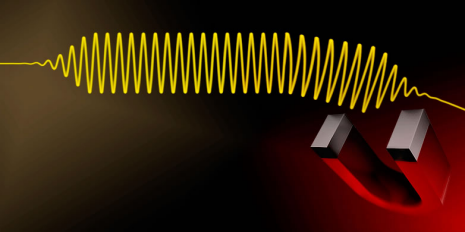

| Online: | |
| Visits: | |
| Stories: |

| Story Views | |
| Now: | |
| Last Hour: | |
| Last 24 Hours: | |
| Total: | |
Artificial Magnetic Fields for Photons
Light particles do not usually react to magnetic fields. Researchers at ETH Zurich have now shown how photons can still be influenced by electric and magnetic fields. In the future that method could be used to create strong artificial magnetic fields for photons.
In modern information technology there is a rather clear division of labour between light particles (photons), used for transmitting data fast and reliably over large distances, and electrons, which are responsible for data processing in computer chips.
One reason why photons are not used for data processing is that they cannot be steered as easily as electrons. Since they have no electric charge they cannot be straightforwardly controlled using electric or magnetic fields. A group of researchers at ETH Zurich led by Ataç Imamoğlu, a professor at the Institute for Quantum Electronics, have now experimentally shown how to produce artificial magnetic fields that allow one indirectly to control photons.
Photons are usually insensitive to magnetic fields. However, their propagation can be steered by electric and magnetic fields while they propagate in a solid medium.
Visualisations: Colourbox / Montage Josef Kuster
Polaritons as luggage
Even though it is impossible to give photons an actual electric charge, one can make them believe, as it were, that they have one. For a few years now researchers have, for instance, developed materials whose optical properties are fashioned during the production process in such a way that photons move through them just as though they “felt” an electric or magnetic field. The disadvantage of that technique, however, is that one cannot change those artificially induced fields, or at least not very fast. Fast control, of course, would be necessary in order to build computers or other devices in information technology using photons.
“Our approach is not based on a sophisticated structure of the optical material”, explains Emre Togan, Senior Scientist in Imamoğlu’s research group, “but on the use of polaritons”. When photons enter a material whose electrons can be moved or “polarized” by the light waves (a dielectric material), they form polaritons, which are coupled optical and polarization waves. The latter are also known as excitons, which are pairs of electrons and “holes”, i.e., missing electrons in the energy structure, that are bound together by the electric force.
Photons that would propagate freely in vacuum are converted into polaritons and lug those excitons around with them, so to speak, as they move through the semiconductor. Photons that are normally insensitive to electromagnetic fields can now be indirectly steered through this luggage by exposing the semiconductor material used by Imamoğlu to electric and magnetic fields.
Constant gauge potential
“The combined effect of magnetic and electric fields on polaritons then leads to a gauge potential”, says Hyang-Tag Lim, a post-doctoral researcher in Imamoğlu’s laboratory. A gauge potential can be compared to a tiltable lifting platform. If one puts a vehicle on such a platform and then raises it, the potential energy (associated with its elevation) of the vehicle changes, but the vehicle itself will not start rolling. Only when the platform is tilted, and thus a difference in height along the platform is introduced, will the vehicle move. In a similar way a gauge potential only results in an effective magnetic field if it varies in space.
In their experiment, just published in the scientific journal Nature Communications, Imamoğlu and his collaborators managed, as a first step, to create a constant gauge potential for the photons. To detect that gauge potential, the researchers built a miniature interferometer. In an interferometer light is first split into two beams, which then propagate, for instance, through different materials. Thereafter the beams are superimposed again, and the resulting interference – i.e., the fact that peaks and troughs of the waves cancel, but two coinciding peaks reinforce each other – is measured at the output of the interferometer.
From the resulting interference pattern the physicists were able to deduce that, indeed, there was a gauge potential acting in the semiconductor material. “The beauty of it is that we can use the fields to control that gauge potential at will”, says Imamoğlu. Even though the researchers at ETH used photons propagating in a semiconductor, the method they have now demonstrated is very general. It is applicable to any system in which photons are strongly coupled to a polarizable medium, such as a gas of Rydberg atoms.
As a next step the researchers plan to work on realizing even stronger gauge potentials that vary in space with which very large artificial magnetic fields for photons could be produced. Those fields could then be used to investigate, using photons, phenomena that are usually only observable with electrons under the influence of strong magnetic fields, such as the quantum Hall effect.
Contacts and sources:
Oliver Morsch
ETH Zurich
Citation: Lim HT, Togan E, Kroner M, Miguel-Sanchez J, Imamoğlu A: Electrically tunable artificial gauge potential for polaritons. Nature Communications 2017: 14540, doi: 10.1038/ncomms14540
Source: http://www.ineffableisland.com/2017/03/artificial-magnetic-fields-for-photons.html



